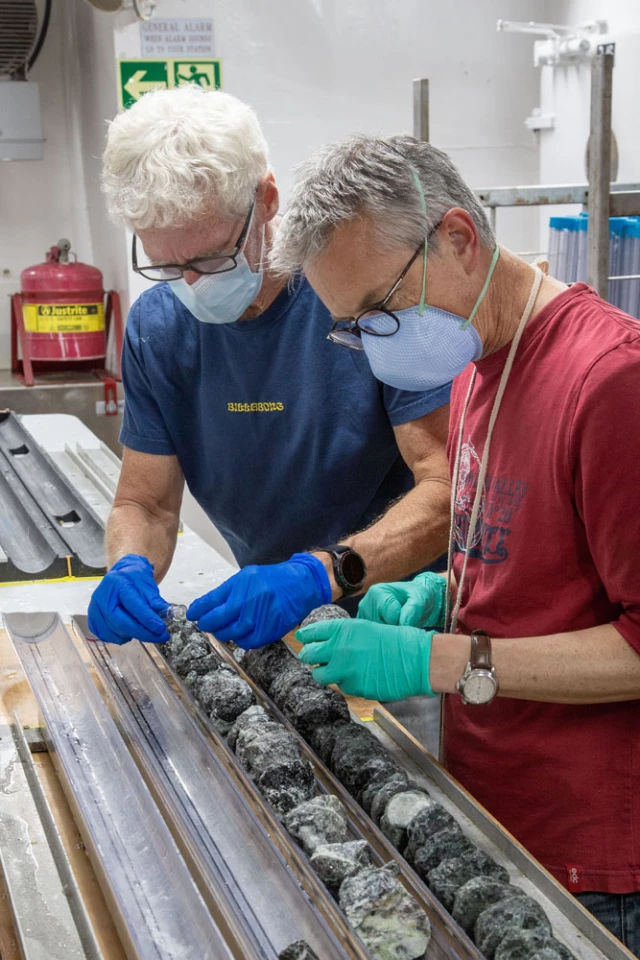Geologists have drilled deeper than ever into material from the Earth’s mantle – more than three quarters of a mile (1.2 km). The sample gives a glimpse into the geology and even life in a deep world normally beyond our reach.
The mantle makes up the majority of the Earth’s interior, spanning thousands of kilometers between the crust and the core. Described as having the consistency of caramel, the mantle is a squishy semi-solid that contains a different mineral composition from we see here on the surface.
The problem is, it’s tricky to study the mantle directly, since it’s usually located beneath about 25 miles (40 km) of rocky crust. Thankfully, there are areas where the crust is much thinner, and mantle material makes it all the way to the surface. And the new rock core was drilled from one such place.
An international team of scientists journeyed out to the Mid-Atlantic Ridge, a chasm in the seabed of the North Atlantic Ocean that’s formed as the Eurasian Plate slowly separates from the North American Plate. Here, mantle rock called peridotite seeps upwards and reaches the seafloor.
And now, we have the biggest sample ever collected. The team drilled down an astonishing 4,160 ft (1,268 m) into the peridotite, and recovered 71% of the rock. By comparison, the previous record reached a depth of just 659 ft (201 m).

The sample was collected by research vessel JOIDES Resolution, which used a crane to drill into an underwater mountain range called the Atlantis Massif, near the Mid-Atlantic Ridge. Apparently, the scientists had only planned to collect about the same amount as the previous record, but they found the work surprisingly easy and much faster than expected, so they essentially kept drilling for the entire length of the expedition.
A team of 30 scientists onboard the ship analyzed the samples as they came in. The peridotite wasn’t pristine mantle material – the rock had interacted extensively with seawater and become “serpentinized,” gaining a texture that looks like snake skin. The peridotite was also interspersed with a range of other types of rock, which suggests that there might not be as definitive a boundary between crust and mantle as scientists thought.

The study wasn’t purely of geological interest either. The team also collected samples of the microorganisms that live in different sections of the sample, with the goal of studying the chemical reactions that produce hydrogen and other molecules that life would need to thrive down there.
“We will use these samples to investigate the limits of life in this deep subsurface marine ecosystem, improving our understanding of its origins, and help define the potential for life beyond Earth,” said Professor Gordon Southam, an author on the study. “Nickel is required in hydrogenase, the key enzyme allowing these ancient bacteria to use hydrogen in these extreme environments, so we’re currently tracking this through mantle rock.”
The research was published in the journal Science.
Source: University of Queensland via Nature






